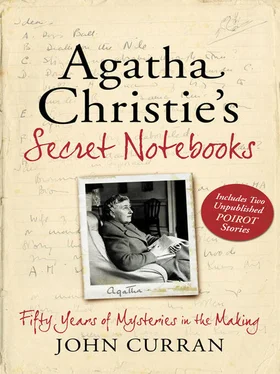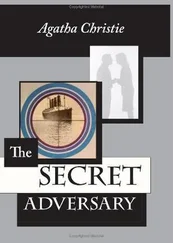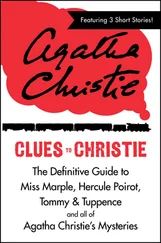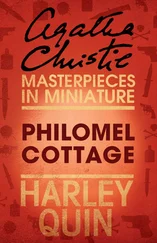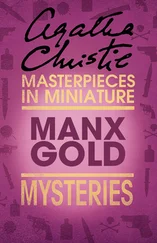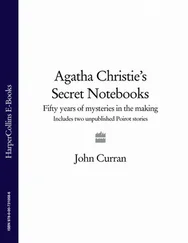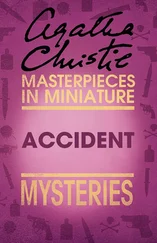In the notes for this novel we again see the method of assigning letters to scenes, although in this case no rearrangement of them is specified in the Notebook:
Progress Moving Finger Points
A. J [erry] discovers book of sermons cut out pages [Chapter 9 v]
B. Megan goes home [Chapter 7 ii]
C. Maid knows something—scene between her and Elsie H [olland]—Joanna overhears comes back and tells J? Did she come back that afternoon? Does she come and ask advice from Partridge? She is killed—deliberate [Chapter 7, but not exactly as described here]
D. Tea with Miss Emily—big raw-boned dragon looks after her [Chapter 7 iv]
E. Vicar? His wife—vague—slightly bats? Hits nail on head—poor Aimee very unhappy woman [Chapter 5 i]
F. Institute? Someone typing—J goes in—finds Aimee who ‘heard’ someone leave [Chapter 10 ii]
G. J going off to sleep ‘No S[moke] W[ithout] F[ire]’—smoke—smoke screen—War—‘scrap of paper’ Nurse told him as little boy—etc [Chapter 8 i]
H. Spiteful rumour about—Elsie means to be No. 2 [Chapter 9 ii]
I. The posted letters—Aimee’s written at Institute—one of them is IT—substituted—(did she drop them and pick them up in High St.—S[ymmington] there) (E[mily] B[arton] at Institute too) [Chapter 13 ii]
As can be seen, the order changed considerably—the mutilated book of sermons (scene A) is not discovered until Chapter 9—and the scenes are scattered through the book. Scene C is an ingenious twist on the person who ‘knows something’ and then becomes the next victim. Here, instead of knowing or seeing something dangerous to the killer, the maid ‘knows something’ because she saw nothing. It is the fact that she saw nothing when she should actually have seen something that seals her fate.
The Moving Finger is another title that Christie considered dramatising. Notebook 45 consists of rough preliminary notes including a list of the characters of the novel and tentative settings. But the novel is very ‘mobile’, with many scenes set in the streets and houses of Lymstock. The multiple potential settings, as shown by the note below, created immediate problems in devising a successful dramatisation of this title:
Scene?
Maisonette or divided house?
Garden of same used by both
Room in police station
Symmington’s house
The Hollow
25 November 1946
I hate the dreadful hollow behind the little wood Its lips in the field above are dabbled with blood red heath, The red ribb’d ledges drip with a silent horror of blood And Echo there, whatever is ask‘d her, answers ‘Death’.
Tennyson, Maud
Poirot is not amused by the scene at the swimming pool—the sprawled man and the woman with the revolver standing over him. He assumes that it has been arranged for his benefit until he realises that it is not a tableau and that he is looking at a dying man…
Poirot quotes the Tennyson poem in Chapter 18 and although it is more blood-drenched than the novel, Henrietta sees the relevant symbolism. Interestingly, the last line of the poem also appears in Notebook 3 in an entry dated October 1972, when Christie was planning what was—to be her final novel.
The very earliest glimmering of the plot of The Hollow can be seen in a throwaway line in Notebook 13—‘Poirot asks to go down to country—finds a house and various fantastic details’—hidden among an A-Z list of other ideas. The very fact of Poirot going ‘down to country’ is the first clue but the fantastic details are the elements of the tableau that greets him when he calls to The Hollow—the dying man sprawled by the swimming pool, the blood dripping into the pool itself, the woman standing over him holding the revolver, and the other onlookers in the drama, one holding a basket of eggs and another holding a basket of dahlia heads.
Described in somewhat unexciting terms on the original blurb as ‘a human story about human people’, The Hollow is almost a Mary Westmacott title. It resembles a ‘straight’ novel more than a detective story and, indeed, has less in the way of clues and detection than almost any other Poirot title. In an article for the Ministry of Information in 1945 Christie wrote: ‘Naturally one’s methods alter. I have been more interested as the years go by in the preliminaries of crime. The interplay of character upon character, the deep smouldering resentments and dissatisfactions that do not always come to the surface but which may suddenly explode into violence.’ This is the template of The Hollow —a weekend of smouldering and complicated emotions erupting into murder. The character drawing in this novel is the most searching she has done to date. Five Little Pigs and Sad Cypress paved the way but in The Hollow, her powers of characterisation reached full flower to the detriment, unfortunately, of the detective plot. Five Little Pigs is the most perfect example of the marrying of the two, Sad Cypress still has a distinct detective plot with clues and alibis; but in The Hollow, the detection is minimal and Poirot is almost surplus to requirements.
When, some years later, Christie came to dramatise The Hollow for the stage, she dropped Hercule Poirot from it. And it is difficult not to agree with this decision. Of all his cases, he does not fit in here. It is inconceivable that he would have bought a house in the country and at no subsequent time is it even mentioned. And as this case involves little in the way of physical clues, he is almost entirely dependent on the characters. When Christie says in her Autobiography that he doesn’t fit, she is quite right. It was probably pressure from her publishers that caused her to insert him into this milieu; he hadn’t appeared in a novel since Five Little Pigs, three years earlier. He doesn’t enter the novel until almost 100 pages into it and, even more peculiarly, his French idioms are almost completely absent. Also dropped from the stage version is the character David Angkatell, who is completely superfluous and whose absence from the novel would have had no adverse effect either.
The notes in Notebook 13 are preceded by Death Comes as the End and followed by Taken at the Flood, a sequence reflected in the order of publication. The first point of interest in Notebook 13 is the fact that two alternate titles were under consideration for The Hollow. Both of them reflect elements of the finished novel. The events take place over what proves, indeed, to be a tragic weekend and the poignant memories of happier early days—a motif that runs throughout the novel—dominate the lives of many of the characters:
Tragic Weekend
Return Journey
Elizabeth Savarnake [Henrietta]
Lucy Angkatell
Gwenda—her niece [Midge]
John Christow/Ridgeway
Gerda Ridgeway
Veronica Cray
Edward
Henry Angkatell
Lady Angkatell in early morning—Gwenda—poor Gerda etc [Chapter I]
H.P. next door
The Hollow features strong echoes of Greenway in the descriptions of Ainswick, the Angkatell family home that dominates both the book and the lives of many of the characters. It is described in Chapter 18 as ‘the white graceful house, the big magnolia growing up it, the whole set in an amphitheatre of wooded hills’; and in Chapter 6: ‘the final turn in through the gate and up through the woods till you came out into the open and there the house was—big and white and welcoming’.
Note that the niece’s name, Gwenda, was abandoned (perhaps because of its similarity to Gerda) in favour of Midge. But it is also possible that there is a connection with Gwenda from Sleeping Murder, in view of the new timeline for the writing of that novel (see Chapter 7). And the alternative that was considered for (Dr) John Christow’s name, Ridgeway, was to become the name of the disease on which he was working.
Читать дальше
Конец ознакомительного отрывка
Купить книгу
